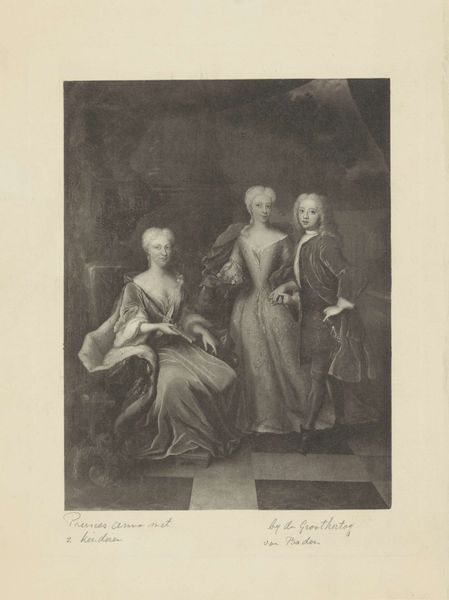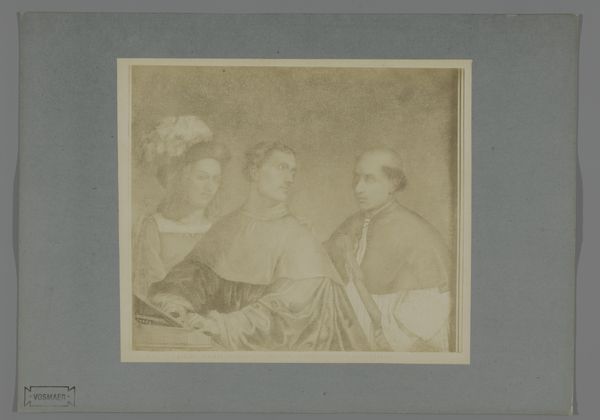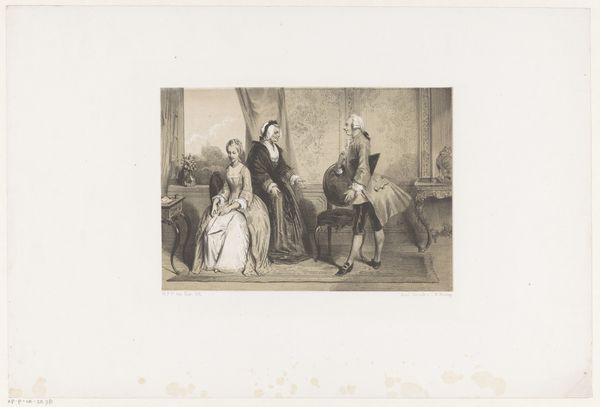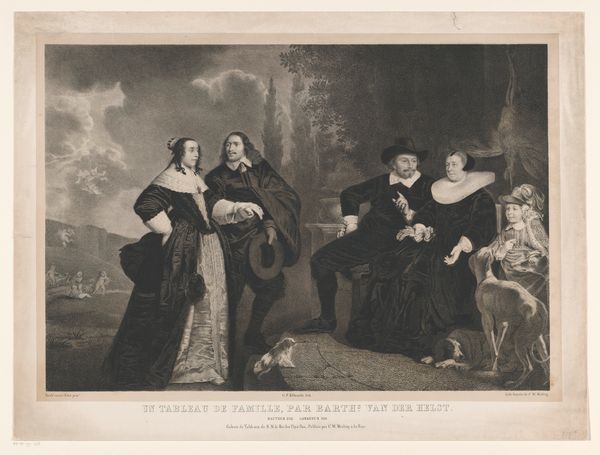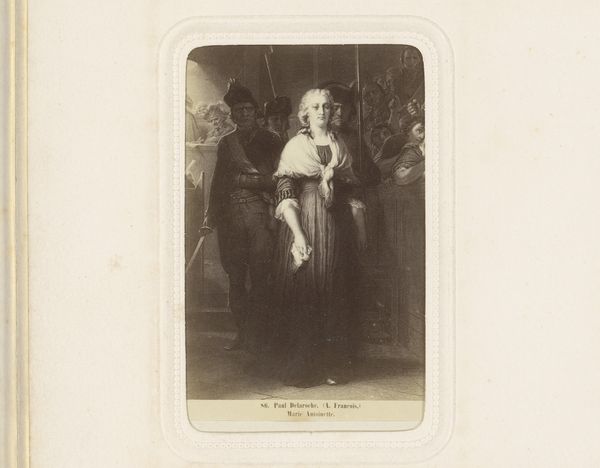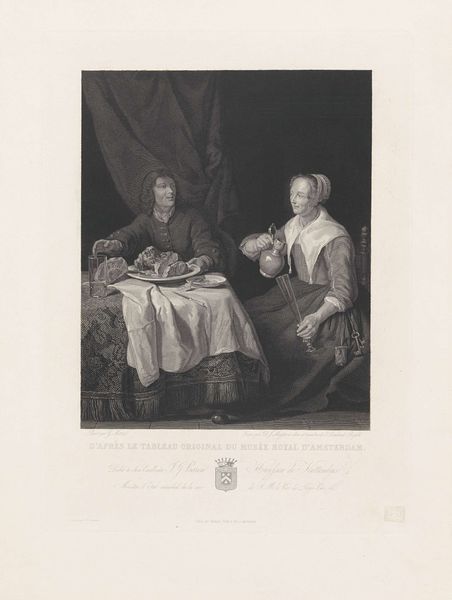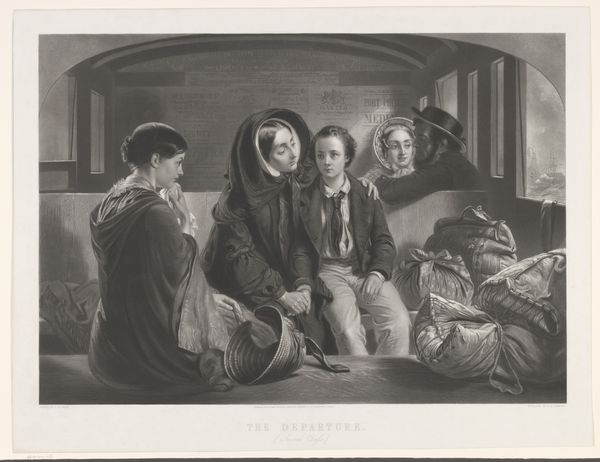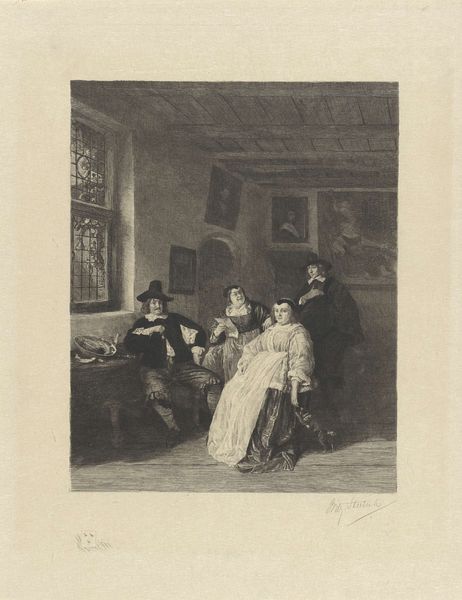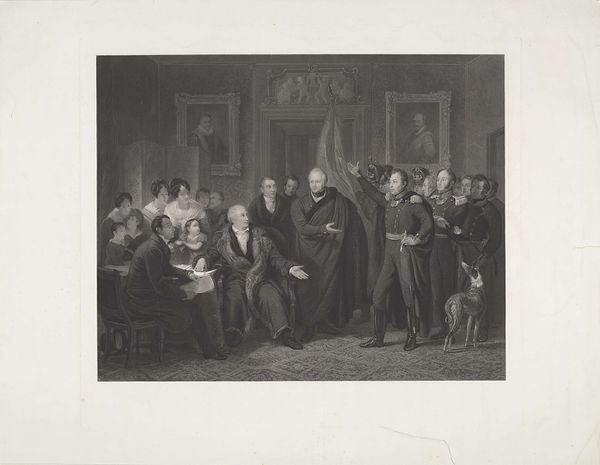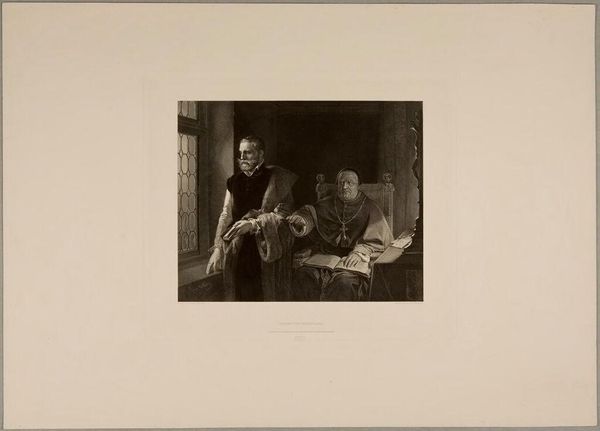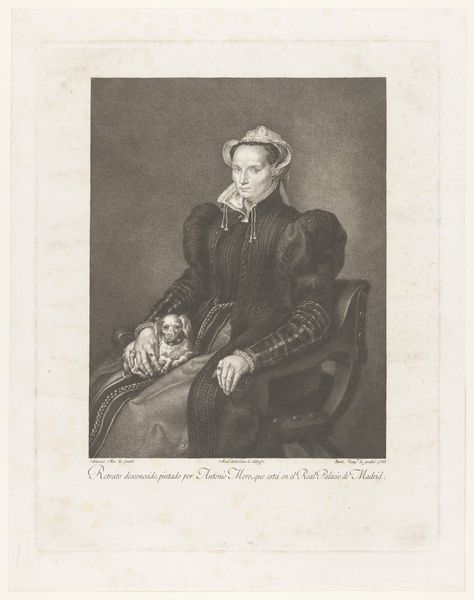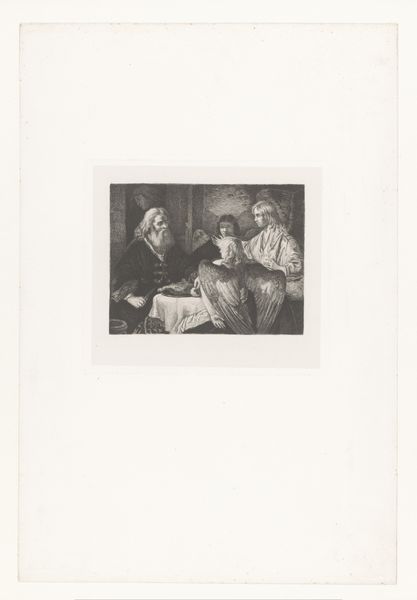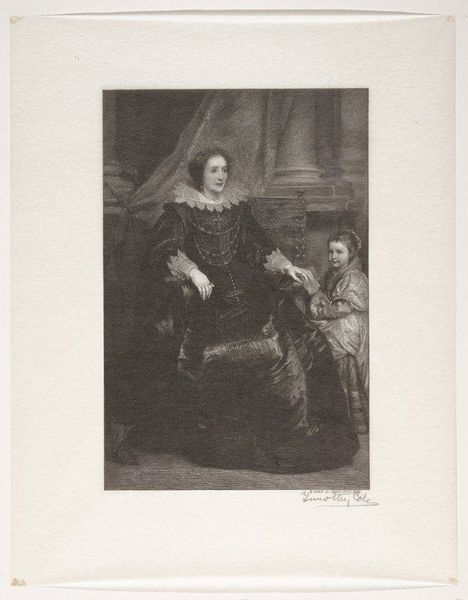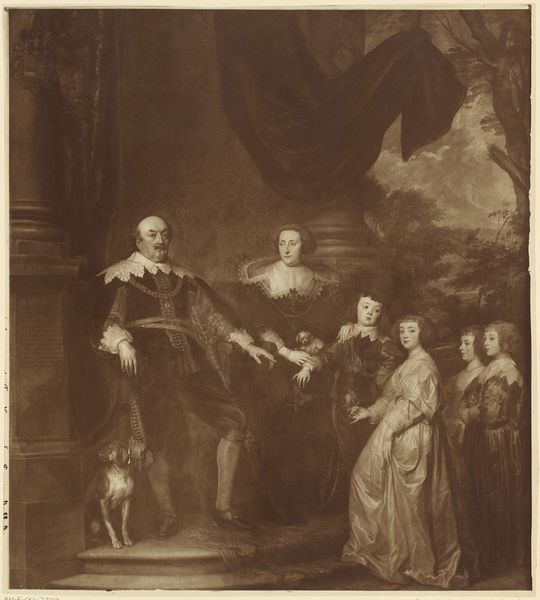
photography, albumen-print
#
portrait
#
photography
#
history-painting
#
academic-art
#
italian-renaissance
#
albumen-print
Dimensions: height 200 mm, width 221 mm, height 241 mm, width 327 mm
Copyright: Rijks Museum: Open Domain
Curator: At first glance, this photograph titled "Het Concert," created by Fratelli Alinari sometime between 1880 and 1895, strikes me as oddly familiar, almost unsettling in its staging. There is a muted tonality to it; a quiet sort of atmosphere. Editor: Indeed. The arrangement is highly reminiscent of Italian Renaissance portraiture; you see this kind of studied theatricality adopted by many studios seeking to recreate historical painting during the rise of photography as an established art form. The composition suggests it is possibly referencing an actual painting— perhaps a Northern Renaissance or Italian Renaissance piece? Curator: Precisely. I feel echoes of the past reverberating from this albumen print. Note the clothing, carefully staged as markers of wealth, status, and learning. It also plays into the history of depicting musical gatherings and their implied social function: refinement, leisure, education. Music, you know, was heavily imbued with symbols during that time, acting as a mirror for virtue and morality. Editor: Absolutely. But more broadly, let’s consider the power dynamics inherent in restaging this scene through a photographic lens. Who is being memorialized or validated here through these historically allusive choices? What is communicated by choosing to capture this scene using the photographic techniques that are specific to this period, beyond simply a pursuit for “historical accuracy”? It strikes me that a dialogue regarding the rise of an upper class with historical pretensions would prove rather interesting here. Curator: Ah, that gives me pause. I see how it subtly blends art history with social commentary. It invites questions of class identity, and visual representation through a staged performance for the camera, making visible some aspect of internal aspirations… The whole composition serves almost like a symbolic mirror, in a way, that invites the spectator to reflect on their own image, literally and metaphorically. Editor: Right. The photographer, or more likely the studio directors, become orchestrators of social meaning, leveraging history to participate in constructing a vision of the world during the rise of photography and portraiture as public arts. What a peculiar mirror the medium provides, one with far greater symbolic implications!
Comments
No comments
Be the first to comment and join the conversation on the ultimate creative platform.
